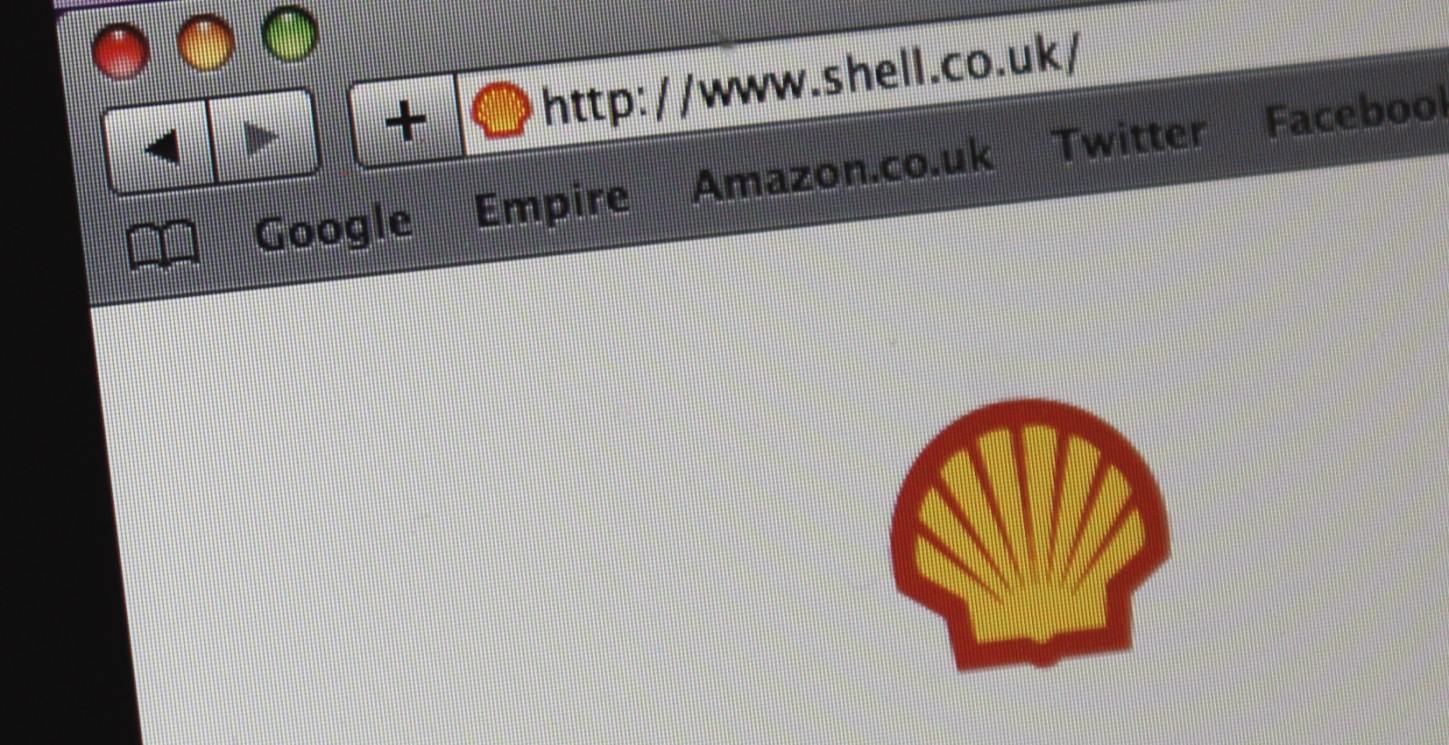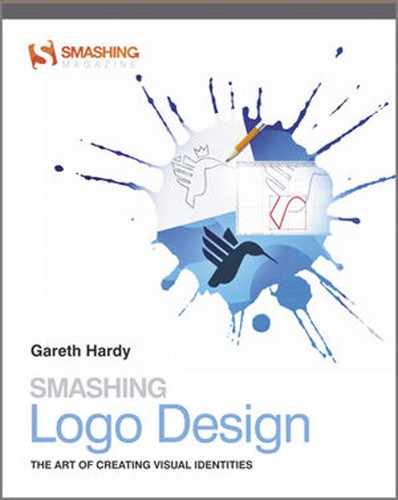Chapter 1: The Logo
When I say the brand name Nike, what pops into your mind? Odds are, it’s the famous Nike Swoosh. What about McDonald’s? Are you picturing the Golden Arches? These famous brands are so tied to their logos that you (and billions of people like you) have trouble thinking of the name of the brand without also thinking of the logo. And the reverse is also true: The logo is immediately identifiable with the brand. That’s the power of a logo.
A logo is a graphic identifier that is used to visually communicate anything that requires to be identified. It helps the brand set itself apart from the competition—you don’t see the Golden Arches and think of Burger King. And yet logos are not limited to commercial endeavors—charitable organizations, campaigns, even individuals can use logos to identify themselves.
In this chapter, I introduce you to what logos are, who uses logos, and where logos are used.
What Logos Are
So, what exactly is a logo? To answer this question, I sought the opinion of Milton Glaser, one of the most revered designers in the history of graphic design. His most notable logo design work is the identity for the I ♥ New York campaign, which has been in use since its introduction in the mid-1970s. Mr. Glaser has worked with and designed logos for over 50 years, so he seemed like the perfect candidate to ask what a logo is. Here’s his definition:
A logo is either a series of words or an image that attempts to represent an institution or an individual in a way that is symbolic in some cases or parallels the person’s identity. If it’s for an individual, the logo is very often for their name itself. On the other hand, some logos are abstract, and others use literature or words to achieve their effect. In any case, what logos attempt to do is synthesize an individual or institution into an understandable visual form.
An enterprise without a logo has no chance of making an impact on its target audience. You have to be seen to be heard. Logos help to communicate with the target audience and are often the first point of contact with that group.
Remember: When a logo is used for a brand, the logo is a representation of the brand, not the brand itself.
Who Uses Logos
Logos are not just used by massive corporations. A logo can be used to represent just about anything or anyone:
• Businesses: In order to create a fully functional identity, most businesses use logos. Logos are everywhere in the business world, from the largest corporations to the mom-and-pop store on the corner.
• Products: A business might have a logo to identify itself, as well as logos for each of its products. Or it might use the same logo to identify itself as it uses to identify all its products. For example, Apple uses the same logo for everything it produces, from MacBooks to iPods to iPhones. On the other hand, SC Johnson has a logo to represent the company itself, and separate logos for each of its products, including Windex, Ziploc, and Drano.
• Individuals: Some people, like celebrities and sports stars, have become brands themselves. David and Victoria Beckham are the perfect example of celebrity brand power. When they got married, it only magnified their celebrity, and they soon became aware that they could market themselves as a brand. They’ve recently launched a perfume and aftershave range that features a monogram of their initials, DVB.
Many celebrities on a similar level have become wise to the power of personal branding to increase their income. Tennis star Roger Federer is often seen on court wearing a hat that features his own personal logo. The same goes for golfer Tiger Woods and many other world famous celebrities.
Of course, an individual doesn’t have to be famous in order to use a logo to promote himself or herself. Anyone seeking public recognition of his or her name as an identity can use a logo to achieve this goal.
• Campaigns: Any type of campaign that seeks to raise awareness for a cause—whether political or not—uses a logo. Barack Obama’s campaign logo—an O filled with a sun rising on the horizon—is an example of a recognizable logo. The same goes for the “got milk?” logo used by the California Milk Processor Board to promote the consumption of milk.
• Nonprofit organizations and charities: Just because an organization isn’t looking to make a profit doesn’t mean that it doesn’t need a logo. Charities can use branding power to get people to support their cause.
A logo for a nonprofit organization that made an immediate impact on me was the logo for Live Aid, a music concert that was held in 1985 to help raise funds for victims of famine in Ethiopia. The combination of a guitar and an outline of the African continent really makes you think and helps to spread the reason behind the concert.
Where Logos Are Used
Logos are everywhere:
• Print: You can find logos in newspaper and magazine advertisements (see Figure 1-1), on swanky business cards, or on traditional letterheads. Wherever the medium of print is possible, an opportunity to display a logo is there.

Figure 1-1: A printed advertisement for Amazon.co.uk.
Photo by Charlotte Morris
• Television and movies: Logos are used in the commercials on TV, as well as in the advertisements before movies start. But logos aren’t just in the commercials—they’re in the TV shows and movies themselves. Next time you’re watching a TV show or movie, look for logos. Companies often pay to have their products used; this is known as product placement.
Some TV shows and movies use fake brands so that they don’t have to worry about copyright restrictions or pay to use the real brands, or to set the world of the TV show or movie apart from the real world. For example, Duff Beer is the fictional brand of beverage in the cartoon The Simpsons. If you mention the name Duff Beer to a fan of the show or present them with the Duff Beer logo, he’ll likely know where it’s from, even though it isn’t a real brand.
• The Internet: Since it’s launch in 1992, the World Wide Web has given brands a new domain (pun intended) to play with. Nearly every company now has an online presence (like the one shown Figure 1-2). The Internet has widened the opportunity for brands to use their logos—it’s a new area to compete for visual space.

Figure 1-2: The Shell logo online.
Photo by Charlotte Morris
• Signage: When I first visited the United States back in 2000, the first thing that struck me was the different marketing landscape from what I had been accustomed to back home in England. Driving down the highway at night, I could see a main street in Orlando, lit up with a straight path of signs, each one displaying a different logo. To improve the chances of a passerby glimpsing them from afar, the signs were lit with bright lights, which mimicked their cry for attention, each logo seeking to be more identifiable than its competitors.
This type of logo collage on the landscape seems to have transcended the globe in recent years, with McDonald’s signs visible on such structures worldwide (see Figure 1-3). The movie Logorama (2009) hints at how logos can take over our surroundings; the events in the film are told through the use of over 2,500 commonly recognizable logos.

Figure 1-3: A common sight across the world.
Photo by Charlotte Morris
Hiring a logo designer
When embarking on a new enterprise, many business owners are tempted to create their logos themselves, but seeking professional assistance is always a wise move. Finding the right designer can be a daunting prospect, so here are my recommendations:
• Hire a professional. Asking your friend’s mom’s niece who has dabbled with Microsoft Paint to design your logo may save you money in the short term, but it can have long-term negative effects. Seek the services of a professional graphic designer—someone who clearly knows what he or she is doing.
• Check the designer’s portfolio. It’s important to assess a potential candidate’s track record and experience. Don’t be fooled by pretty colors or dummy projects—look for the designer’s solutions to real design briefs. If the designer is consistently turning out amazing logo designs, you can be assured that he or she will be able to help you with a new identity.
• Remember that communication is paramount. A good designer will understand your goals and advise you on the best possible route for the project before any work has begun. A good way to judge a designer is to make an inquiry and assess the way he or she approaches your first point of contact. If the designer gets back to you right away with a set price, he or she probably won’t have the aims of the project at heart. Each logo design project is different, and the designer’s price structure should reflect this—a designer should need to discuss the specifications of the project before setting a price.
• Don’t be guided by price. Naturally, your project has a budget, but the cheapest option isn’t always the best. Quality doesn’t come cheap. There are no set rules for the minimum or maximum that you should spend on a professional logo design, but if a price seems too good to be true, it probably is. Remember: A logo is one of the most important investments a business can make to improve its reputation and identity.
• Know your goals. A good designer will design with the sole purpose of meeting your aims and offer you advice along the way. Know what you want, but be open to the advice of the designer—he or she can guide you in the right direction.
